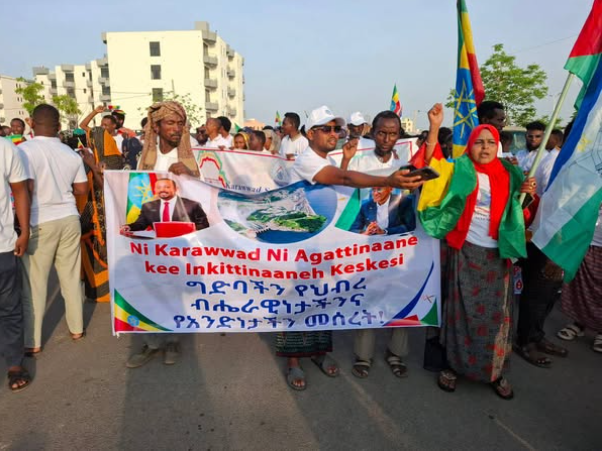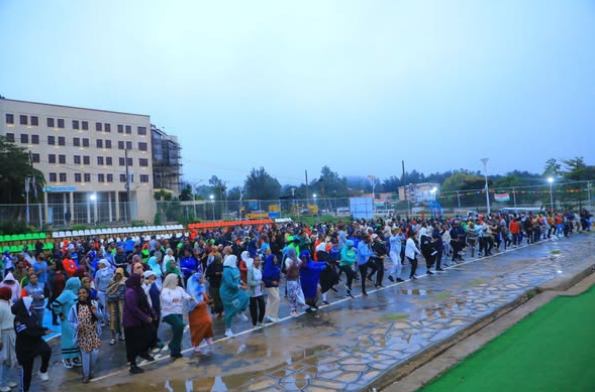Ethiopia has begun a new chapter of national pride, following the completion and inauguration of the Grand Ethiopian Renaissance Dam . The dam, fully-funded by Ethiopians without relying on foreign loans, has become more than a hydroelectric project it now represents unity, resilience, self-reliance, and hope for a more prosperous future. Across Ethiopia, people are gathering in massive rallies, chanting slogans, dancing, and pledging to carry forward the same spirit in all major development works.
What Makes GERD a Self-Funded National Achievement
What stands out about GERD is how it was financed: through bonds, donations, and contributions from Ethiopian citizens. Rather than depending on international lending or foreign aid, the government mobilized towns, rural areas, diaspora, students, farmers all segments of the population to chip in what they could.

That sense of shared ownership gives the dam strong symbolic power. Citizens say they feel they helped build their future, not just watch from the sidelines. Chiefs and regional administrators often say that this self-funding demonstrates Ethiopia’s ability to achieve great things through its own effort.
Celebrations Across Regions Rallies, Speeches, Cultural Events
From the dam’s home region in Benishangul-Gumuz to Harar, Afar, Gambella, and the Central Ethiopia region, citizens have been celebrating with colorful rallies. In Assosa capital of Benishangul-Gumuz, people held patriotic songs, traditional dances, and banners reading Our Dam is a Foundation of Our Unity, or Built with Our Own Resources.
Gambella, Harar, Semera Afar Region, similar scenes unfolded. In the Central Ethiopia Region, thousands gathered under the theme We Are Strong Together. These events are not just parties; they reflect feelings of national solidarity and shared purpose.
Determination and National Identity Through GER
Leaders and citizens alike say GERD goes beyond economics. They view it as a bridge across ethnic, regional, and social divides. Chief Administrator Ashadli Hassan in Benishangul-Gumuz called it a powerful symbol of hard work, unity, determination, and sacrifice.

He emphasized that despite internal and external challenges, the dam’s success shows what Ethiopians can do together. Former Oromia leader Lemma Megersa also congratulated the nation, saying that GERD made everyone from rich to poor, young to old feel included, and taught a lesson in national solidarity.
While much of the celebration focuses on symbols and unity, practical benefits matter too. Regions near the dam and across the country look forward to access to more electricity, which means better services like water supply, small industries, and better lighting.
Challenges and Hope Preserving the Spirit While Addressing Real Issues
Even amid celebration, many Ethiopians remind one another that GERD also came with challenges: disputes with downstream countries over water flow and rights, concerns about environmental impact, and the need to maintain and manage such a big facility.
Some voices urge that the unity and resolve seen during GERD’s construction should be sustained into solving ongoing problems education, health, conflict resolution, ensuring all regions benefit equally. The hope is that GERD will not be a one-off symbol, but a model of how Ethiopia can carry forward large development projects with fairness, efficiency, and national buy-in.


 Syrian Transitional Government Prioritizes Stability
Syrian Transitional Government Prioritizes Stability